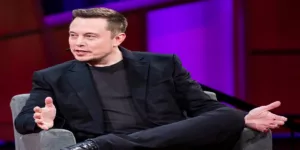Elon Musk has become a household name in the technology world. His unconventional approach to innovation gets people talking. This is certainly true regarding his idea behind the Hyperloop, a transportation project he announced in 2013. Musk’s concept is open source, and the main startup spearheading the system’s design is Hyperloop One, a firm based out of Los Angeles which has shown promising progress. However, with many conceptual, financial, and management problems still in question, skeptics are left wondering if the idea is too good to be true.
The Hyperloop concept is based on a series of enclosed, depressurized tubes connecting cities. The pods could carry passengers or cargo and would, in theory, travel through the tubes as fast as 800 mph. These pods would be able to accomplish this feat thanks to lower air resistance due to the depressurization. It’s an undeniably creative concept, but the fact of the matter is the safety and sustainability of the technology is still unproven.
Would It Be Safe to Ride?
There have been many routes proposed, and several world governments have shown interest in the project. However, Hyperloop One has barely reached the testing phase. Current tests running on their half kilometer track have shown faults in the concept. The original route proposed was a 600-kilometer track connecting Los Angeles and San Francisco, and the current tests cannot truly represent the massive size differential.
One criticism of the concept is that due to the depressurization, any crack or fault anywhere on the tube could lead to a system-wide shut down. Even a bump on the track could result in derailing the pod, leading to a catastrophe with potential injuries and fatalities. Every inch of the track and tube would need to be perfect to successfully sustain a pod racing at 800 mph.
The cost and manpower associated with the service and repairs of a single route alone seems unimaginable. That worry is doubled when considering any sort of earthquake or tectonic shift, regardless of the magnitude, would seem to have dire consequences.
Even aside from safety concerns, questions remain about how people would feel about riding the system itself. Granted, the accompanying G-force behind an 800-mph excursion would be low, comparable to taking off on a plane. It would only be felt for about two minutes, both while accelerating and slowing down, after which the body would adjust.
However, the force would increase significantly if the Hyperloop were taking a turn, with the G-force pushing blood around the body rapidly. This experience could be a health risk for some, and just a genuine discomfort to the rest.
Furthermore, the experience would be harrowing for many, as the small pods would be fully enclosed inside the tubes, with no exit or view of the outside world to speak of.
How Much Would This Cost?
In addition to the seemingly endless safety and regulatory concerns, potential investors have raised concerns about the project’s financial feasibility. The numbers provided seem shaky at best. Musk’s original proposal of a 600 kilometer Hyperloop track connecting Los Angeles and San Francisco would be in the ballpark of $6 billion. Critics have argued that Musk completely underestimated the cost, ignoring outlays for land acquisition, taxes, and other regulatory burdens.
Contrary to this number, leaked documents show that Hyperloop One leaders believe that it would cost almost twice as much. Even still, including the service and repair considerations, some critics argue that a 600 kilometer track alone would be in the range of $100 billion. All things considered, it seems Musk’s and Hyperloop One’s estimates are based on serious conjectures.
The suspect and seemingly baseless financial proposals put the Hyperloop One’s management team into question. The company’s reputation already has a track record for odd dealings and controversial interactions.
Hyperloop One recently settled a lawsuit with ousted co-founder Brogan BamBrogan, who sued them over both financial misconduct and abuse. He even described an incident with a noose being placed on a desk, which he described as a physical threat. Taken together, the reports paint a picture of both financial and management incompetence.
The recent announcement of investment from mysterious Russian Dagestanian oligarchs Ziyavudin and Magomed Magomedov has cast a negative light on the project. Ziyavudin catalyzed an agreement between Hyperloop and Moscow, with the dream of creating a new silk road connecting East Asia and Europe.
While a noble idea by itself, some question the motives between Magomedov’s involvement. Though he has denied it, Magomedov has a reputation of both bribery and cronyism. Some believe that Magomedov’s main interest with bringing a Hyperloop One track to Russia is for the sole purpose of lining his pockets and expanding his political influence.
In this regard, the Rotterdam fiasco of Magomedov is recalled when the Rotterdam authorities terminated the contract with Magomedov for the construction of the oil terminal, suspecting a case of money laundering and the inability to fulfill their obligations.
With all the safety and logistical concerns, as well as financial suspicions, entering an agreement with a billionaire oligarch such as Magomedov does not help Hyperloop One’s reputation. Critics suggest that taken all together, it evokes an image not far from a plan to dupe governments into an ultimately impossible project.
While most likely not a grand scheme, the vast amount of doubts and concerns attributed to the Hyperloop One certainly cast doubt into the feasibility of the entire project.








